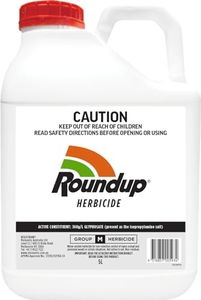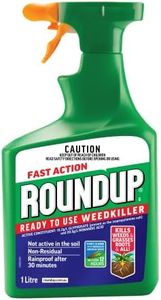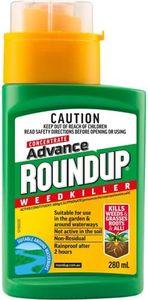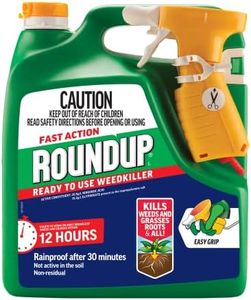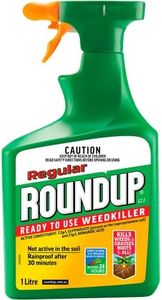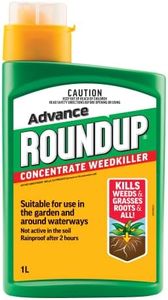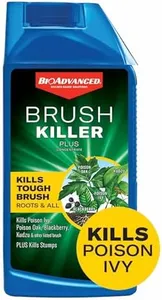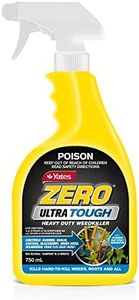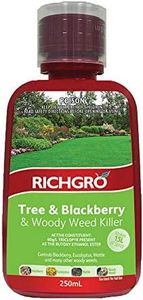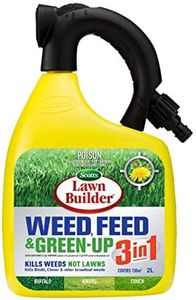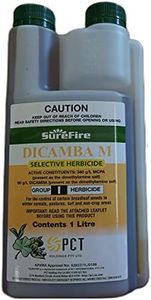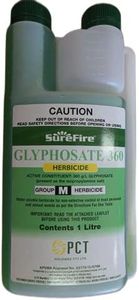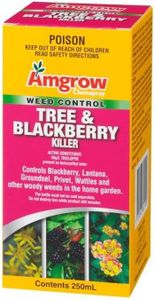We Use CookiesWe use cookies to enhance the security, performance,
functionality and for analytical and promotional activities. By continuing to browse this site you
are agreeing to our privacy policy
10 Best Liquid Weed Killers
From leading brands and best sellers available on the web.Buying Guide for the Best Liquid Weed Killers
Choosing a liquid weed killer can seem overwhelming due to the variety of products available. The best approach is to consider the type of weeds you need to control, where you’ll be using the product (such as lawns, gardens, driveways), and any environmental or safety concerns. Understanding the basic specs and how they apply to your specific weed problems will help you select the most effective option without causing harm to your desired plants or surroundings.Active IngredientThe active ingredient is the main chemical in the weed killer that does the work of killing unwanted plants. This is important because different active ingredients target different types of weeds and may have varying effects on grass or other plants. Common examples include glyphosate for broad-spectrum control or 2,4-D for targeting broadleaf weeds in lawns. If you want to kill all vegetation (total weed control), pick a non-selective ingredient. If you need to protect surrounding grasses and just knock out dandelions or clover, opt for selective active ingredients. Always check if the active ingredient matches your specific weed problem.
SelectivitySelectivity describes whether a weed killer targets all plants or just specific kinds. Non-selective weed killers affect any plant they touch, which is crucial if you want a totally weed-free driveway but risky for use on lawns. Selective weed killers target certain weed types while sparing desirable plants, like turf grass, making them safer for lawns and gardens. Choose non-selective for bare areas where you want all growth stopped and selective for spaces where you want to keep some plants intact.
Systemic vs. Contact ActionSystemic weed killers are absorbed into the plant and travel through its system to kill it entirely, roots and all. Contact weed killers only destroy the parts of plants they touch, meaning regrowth can happen if the roots are left unharmed. Systemic action is better for perennial weeds with deep roots, while contact action can be fine for young, shallow-rooted, or annual weeds. Consider your main target: deep-rooted perennials need systemic, while quick top-kill works for annuals.
RainfastnessRainfastness refers to how quickly the product becomes resistant to being washed away by rain or watering after you apply it. This is important if you live in an area with unpredictable weather or need to water your garden soon after applying the weed killer. Rainfast times range from minutes to several hours—if you need reliability with unpredictable rain, look for a product with a shorter rainfastness window.
Application MethodApplication method describes how you use the weed killer: ready-to-use sprayers, concentrates to dilute, or hose-end attachments. Ready-to-use is simple and needs no mixing, ideal for spot treatments or small areas. Concentrates are better for large areas and can be more economical but require careful measuring and mixing. Your choice depends on the size of your area, your comfort with mixing chemicals, and the level of control you want over your application.
Environmental and Safety ConsiderationsEnvironmental and safety factors involve how the weed killer affects people, pets, wildlife, and desirable plants. Some products are safer around kids and pets and break down quickly in soil, while others can linger and potentially move to nearby plants. If you have children, pets, or want to avoid harming beneficial insects or water supplies, look for weed killers labeled as safe for lawns, low toxicity, or natural/organic. Always read usage guidelines and follow safety instructions carefully.
